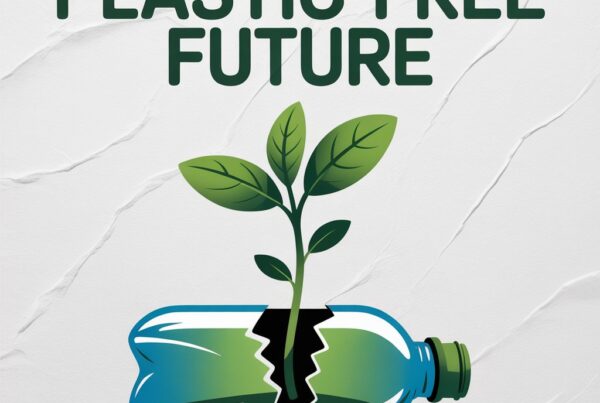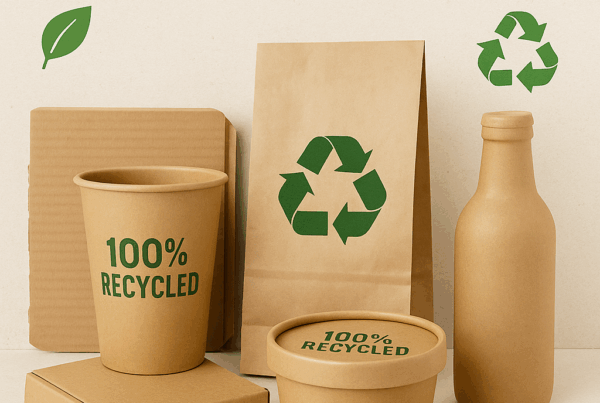Guide to Sustainable Packaging Implementation
A comprehensive overview of sustainable packaging implementation
Introduction:
In today’s increasingly Eco-conscious world, businesses are recognising the critical importance of adopting sustainable practices, particularly in packaging. This guide aims to provide practical insights and actionable strategies for businesses seeking to implement sustainable packaging solutions. From material selection to supply chain collaboration, we’ll explore key principles and real-world examples to help you drive positive change in your packaging operations.
Objective:
This document aims to support businesses in their journey towards sustainability by offering comprehensive guidance on sustainable packaging implementation. Whether you’re looking to reduce your environmental footprint, enhance brand reputation, or save costs, this guide will equip you with the knowledge and tools needed to make informed decisions and drive meaningful impact.
Disclaimer:
The information provided in this guide is for educational purposes only and is not intended as professional advice. While we have made every effort to ensure the accuracy and reliability of the content, it is recommended to further seek additional guidance from industry experts or advisors to address your specific needs and circumstances. Additionally, the examples and case studies presented in this guide are for illustrative purposes only and may not be directly applicable to every business context.
Conclusion:
As businesses continue to prioritise sustainability, adopting sustainable packaging practices has become imperative for success. By implementing the strategies outlined in this guide, you can not only reduce your environmental impact but also drive cost savings and enhance brand reputation. Together, let’s create a more sustainable future for generations to come.
Sustainable Packaging Basics
Material Selection Guide
Sustainable Design Principles
- minimalism, which focuses on simplifying packaging to reduce material usage and waste;
- optimisation, which seeks to maximise efficiency in packaging design and production processes; and
- recyclability, which ensures that packaging materials can be easily recycled at the end of their lifecycle.
Supply Chain Collaboration
Collaborating Across the Supply Chain
Case Studies:
Real-World Examples of Sustainable Packaging Success
Implementing Sustainable Packaging in Your Business
- Assess your current packaging materials and processes to identify opportunities for improvement.
- Research sustainable packaging alternatives, such as recycled materials, biodegradable plastics, and reusable packaging options.
- Consider the entire lifecycle of packaging materials, from sourcing to disposal, to ensure holistic sustainability.
- Develop a plan for transitioning to sustainable packaging solutions, setting clear timelines and milestones for implementation.
- Engage stakeholders across your organisation, including suppliers, manufacturers, and distributors, to gain buy-in and support for sustainable packaging initiatives.
- Monitor and measure the environmental impact of your packaging changes, tracking key metrics such as material usage, waste generation, and carbon footprint reduction.
- Continuously evaluate and refine your sustainable packaging strategy based on feedback and lessons learned, adapting to changing market conditions and emerging sustainability trends.
- Start small and prioritise quick wins to build momentum and demonstrate the feasibility of sustainable packaging initiatives.
- Collaborate with suppliers and manufacturers to identify cost-effective alternatives and negotiate favorable terms for sustainable materials sourcing.
- Educate employees about the importance of sustainable packaging and provide training on new processes and technologies.
- Communicate transparently with customers about your sustainability efforts and the benefits of sustainable packaging, building trust and loyalty.
- Anticipate potential obstacles and develop contingency plans to mitigate risks and ensure smooth implementation of sustainable packaging solutions.
- Seek guidance and support from industry experts, sustainability consultants, and peer networks to leverage best practices and lessons learned from others.
- Stay informed about regulatory requirements and industry standards related to sustainable packaging, proactively addressing compliance issues and staying ahead of the curve.
- Assess current packaging practices and identify areas for improvement, considering environmental impact, cost-effectiveness, and stakeholder priorities.
- Set clear goals and objectives for sustainable packaging integration, establishing measurable targets and timelines for implementation.
- Engage cross-functional teams and key stakeholders in the development of a sustainable packaging strategy, fostering collaboration and alignment with organisational goals.
- Conduct a thorough analysis of packaging materials and suppliers, evaluating sustainability criteria such as recyclability, biodegradability, and renewable sourcing.
- Implement sustainable packaging solutions, leveraging innovative technologies and best practices to optimise material usage, reduce waste, and minimise environmental impact.
- Monitor progress and track performance metrics to measure the effectiveness of sustainable packaging initiatives, identifying areas for improvement and optimisation.
- Continuously review and update the sustainable packaging roadmap, adapting to evolving market trends, regulatory requirements, and stakeholder expectations.
Resources and Further Reading
- Articles:
- “Is sustainability the trend in packaging for 2024?” by Closed Loop.
- “Collaboration and Coordinated Innovation: The Essentials to Tackling Packaging Waste” by Sustainable Packaging (Published in 2023)
- Reports:
- Australian Packaging Covenant Organisation’s (APCO) “National Packaging Targets” (Published in 2025)
- Australian Circular Economy Hub’s “Circular Economy Opportunities for Packaging” (Published in 2021)
- Websites:
- Australian Packaging Covenant Organisation (APCO): https://apco.org.au/
- Sustainable Packaging Alliance: https://sustainablepackaging.org.au/
- Australian Institute of Packaging: http://aipack.com.au/
- Planet Ark: https://recyclingnearyou.com.au/
- Organisations:
- Packaging Council of Australia: https://www.packagingcovenant.org.au/
- Sustainable Packaging Alliance: https://sustainablepackaging.org.au/
- Sustainable Packaging Coalition: https://sustainablepackaging.org/
- Sustainable Packaging Forum Australia (Annual Event)
- Packaging Innovations Expo Melbourne (Biannual Event)
- APCO Sustainable Packaging Workshops (Various Locations)
- Sustainable Packaging Design Workshop by Packaging Council of Australia (Dates and Locations Vary)
- Circular Economy in Packaging Workshop by Australian Circular Economy Hub (Dates and Locations Vary)
- Subscribe to newsletters and publications from Australian organisations such as APCO and the Packaging Council of Australia for regular updates on sustainable packaging trends and innovations.
- Join online forums and communities dedicated to sustainability in packaging in Australia to share knowledge and experiences with peers.
- Participate in webinars, seminars, and online courses offered by Australian sustainability organisations and institutions.


